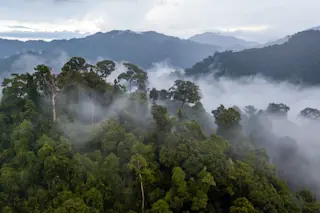Before the days of giant steel and stone monuments, people in North America made monuments of earth. They piled tons of it into oval, conical, and flat mounds for reasons that elude archeologists. Until now, the oldest mound complex was thought to be a 3,500-year-old site at Poverty Point, in northeast Louisiana. But a new study reveals that mounds at Watson Brake, just 55 miles away, are at least 1,900 years older than those at Poverty Point, making them the continent’s oldest known large-scale earthworks, and early evidence for organized society in North America.
Reca Bamburg Jones, an amateur archeologist, first recognized the importance of Watson Brake in 1981, after a timber company cleared the area. The largest mound, some 25 feet high, had been known to locals, including Jones. But after the clear-cutting, Jones noticed that it was connected by 3-foot-high ridges to ten other mounds that ranged in ...














